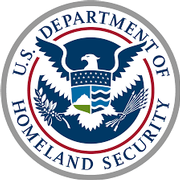
The four-year authorization of the Chemical Facility Anti-Terrorism Standards (CFATS) program is set to expire in January 2019. With less than eight months to go, the Department of Homeland Security (DHS) and the National Protection and Programs Directorate (NPPD) are working with Congress on long-term reauthorization for CFATS while continuing to streamline the program’s processes. For DHS, CFATS reauthorization is a national security and economic imperative.
Industry stakeholders, including members of the National Association of Chemical Distributors (NACD) who have been long-time supporters of CFATS, continue to emphasize the importance of having no gaps in the reauthorization process. Situations created by a lapse in authorization create unreasonable risks for America’s chemical facilities, and long-term reauthorization is the key to creating certainty for industry. NPPD is committed to fully understanding the concerns of the chemical security community as we move through the reauthorization process.
The Protecting and Securing Chemical Facilities from Terrorist Attacks Act of 2014 reinforced the importance of securing the Nation’s high-risk chemical facilities through smart and efficient security investments. The reauthorization brought stability for stakeholders while also allowing the Department to further innovate and improve the program. The progress of the past four years clearly demonstrates how a 21st century program can successfully operate.
One of CFATS’ primary accomplishments since 2014 includes enhancing the risk-tiering methodology to better assess risk at facilities with holdings of chemicals of interest at certain quantities and concentrations. This foundational element of the program was developed in consultation with industry stakeholders and government partners, and is independently verified by third-party experts. The Department streamlined the online Chemical Security Assessment Tool (CSAT) 2.0 portal and reduced the burden on industry by significantly cutting the time it takes to submit information. The Department also implemented the Expedited Approval Program and the Personnel Surety Program in Tier 1 and Tier 2, and continued outreach to first responders.
The CFATS stakeholder community has continuously highlighted that it considers the program structure very sound and its flexibility a key strength. According to industry members, the programmatic improvements to CFATS over the last four years have made the program more efficient and increased security. Moreover, industry stakeholders have expressed appreciation for the professionalism and collaboration of the Department in helping high-risk chemical facilities come into compliance with the regulation.
The threat that gave rise to CFATS remains, and the program continues to adapt to the changing threat environment. The reduction of dangerous chemicals or changes in chemical holdings at thousands of high-risk chemical facilities is an important success of CFATS and is attributable to both the design of the program and the work of strong government-industry collaboration. CFATS long-term reauthorization is vital for America’s continued chemical security.